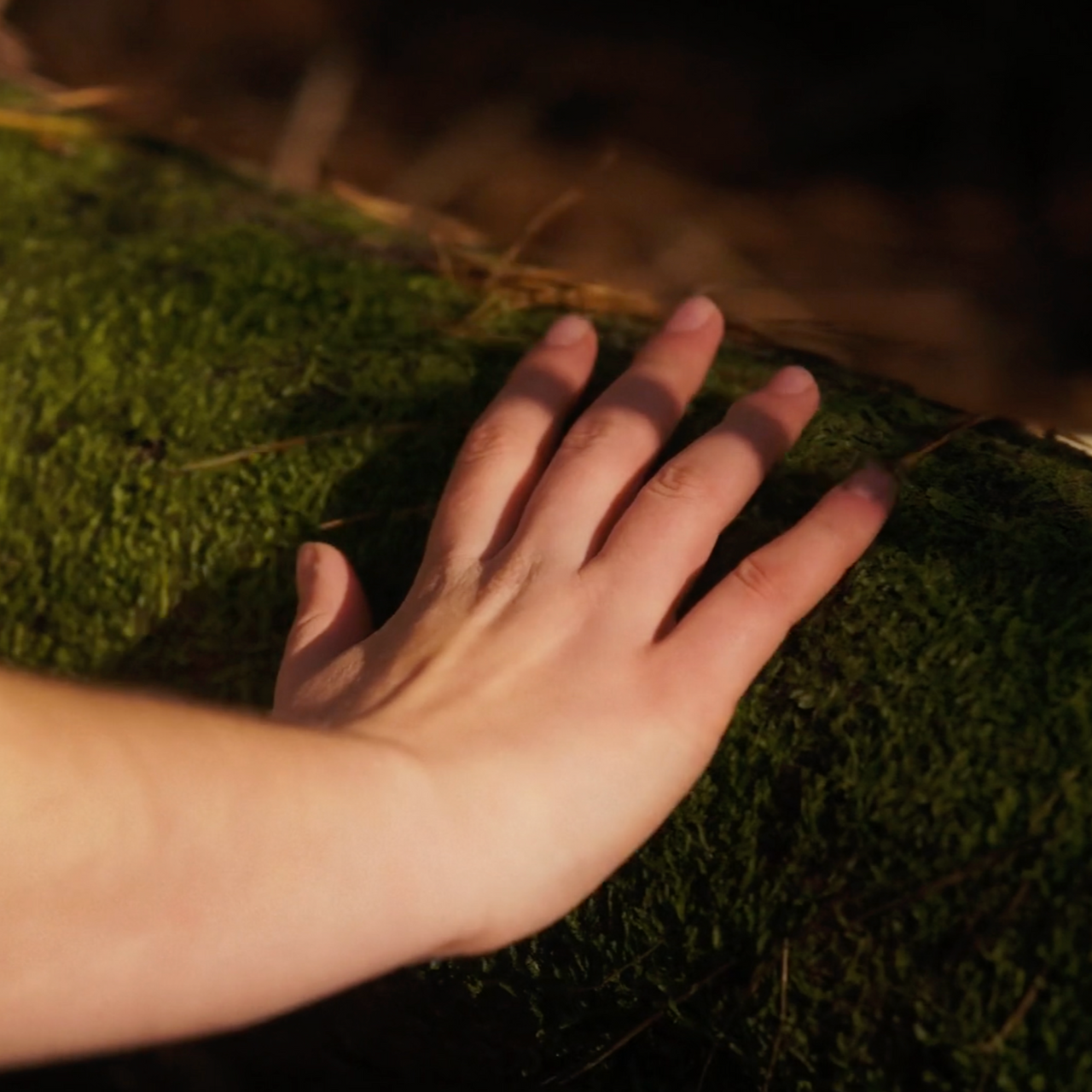Chocolate is a universal comfort—whether it's a moment of indulgence on a busy day, a gift of appreciation, or a treat shared with loved ones, it's hard to imagine a world without it. But, like many beloved products, the future of chocolate is under threat. Climate change is not just affecting the environment—it’s having a profound impact on cacao farming, the very source of all chocolate. With rising temperatures, unpredictable weather, and escalating crop diseases, the chocolate industry is facing a crisis that could disrupt global supply chains, inflate prices, and hurt millions of smallholder farmers who rely on cacao for their livelihoods.
In this post, we’ll explore how climate change is putting cacao production at risk and what can be done to safeguard the future of our beloved chocolate. Let’s start by understanding the key threats cacao farms are facing.
Key Threats To Cacao Production From Climate Change

The Rising Threat Of Extreme Weather
Cacao trees are susceptible to the climate around them, requiring precise conditions to thrive. These trees need consistent, warm temperatures—ideally between 18°C and 32°C—and steady rainfall to yield their precious beans. Unfortunately, climate change has caused an unpredictable shift in weather patterns, and cacao regions, especially in West Africa and South America, are feeling the heat—literally.
In countries like Côte d'Ivoire and Ghana, where more than 60% of the world’s cacao is grown, heatwaves are becoming more frequent, pushing temperatures above 32°C (89.6°F) for longer periods during the growing season. For cacao, this is dangerous territory. Prolonged heat reduces the trees’ ability to photosynthesise, which impacts their growth and the quality of the beans. The consequences? Smaller harvests and lower yields.
I remember a visit to a cacao farm in Ghana a few years ago, where the effects of rising temperatures were already evident. The farmers spoke about how, over the past two decades, they’ve noticed that the dry season was getting longer, forcing them to rely more heavily on irrigation. But water scarcity—due to droughts exacerbated by climate change—was a major challenge. Farmers there were seeing cacao trees wither before their eyes, and those who could not afford irrigation systems were facing severe crop loss.
Excessive Rainfall And Its Devastating Impact
While heatwaves and droughts steal the spotlight, unpredictable rainfall patterns are equally disruptive to cacao farms. In many cacao-growing regions, torrential rainfall during the dry season is now a regular occurrence. While cacao trees do need plenty of water, too much at once can lead to a host of problems. Excessive moisture can cause cacao pods to rot, and the conditions foster the growth of diseases such as black pod disease.
I recall speaking with a cacao farmer from Papua New Guinea who explained how heavy rainfall in unexpected months caused widespread crop destruction. The excessive moisture resulted in fungal growth that wiped out whole crops of cacao. With farmers already struggling to meet demand, this kind of damage can set back a harvest by months—sometimes years.
The Spread Of Pests And Diseases
It's not just the weather that’s wreaking havoc on cacao crops; climate change is also exacerbating the spread of pests and diseases. The cacao swollen shoot virus (CSSV) and black pod disease are among the most threatening, and warmer temperatures make these pests and fungi more active. What’s even worse is that farmers often lack the resources or knowledge to fight these diseases, further putting their livelihoods at risk.
Take, for instance, the case of smallholder farmers in Southeast Asia. As global temperatures rise, pests like the cacao pod borer and aphids have expanded their range, targeting cacao trees that were once resistant to them. The sudden onslaught of these pests has devastated entire crops, leading to crop failures and, in some cases, forcing farmers to abandon their lands.
Deforestation And Its Role In The Climate Crisis
It’s not just the natural weather patterns that are causing trouble; the expansion of cacao farming is also contributing to deforestation. As cacao production becomes less reliable, many farmers, especially in regions like Côte d'Ivoire, are being forced to clear more land to maintain their yields. In Côte d'Ivoire alone, 2.4 million hectares of forest were converted into cacao plantations between 2000 and 2019. This rampant deforestation further accelerates climate change by reducing the number of trees that can absorb carbon from the atmosphere, creating a vicious feedback loop of environmental degradation.
I was shocked when I visited a cacao farm in Costa Rica that bordered a protected forest area. The farmer explained how illegal logging was a common practice, with the promise of higher profits from expanded cacao fields enticing many to break laws designed to protect these forests. The consequences for biodiversity, however, were severe. The land that was cleared didn’t just lose its trees; it lost its wildlife, its soil health, and its ability to withstand future climate shifts.
These extreme weather conditions, the rise of pests and diseases, and deforestation are just the tip of the iceberg. As climate change continues to reshape our world, the future of cacao—and the chocolate industry as a whole—is in jeopardy. In the next section, we’ll dive deeper into the economic impacts of these threats and explore how they’re already affecting chocolate prices and supply chains.
How Climate Change Is Impacting The Global Chocolate Supply?
Supply Shortages And The Impact On Chocolate Prices
The cocoa industry is facing a looming shortage of cacao, and the consequences of this crisis are already beginning to affect consumers and manufacturers. West Africa, where over half of the world’s cacao is grown, has been hit hardest by climate change, with harvests in countries like Côte d'Ivoire and Ghana dwindling due to extreme weather, pests, and diseases.
In fact, the projected global cacao shortage is expected to reach anywhere between 374,000 and 500,000 tonnes in the next few years. This deficit is exacerbated by the underinvestment in aging cacao farms and the lack of new farms being planted to replace them. The rising temperatures are making the land less hospitable to cacao trees, causing farmers to struggle to maintain their yields.
As a result, the price of cocoa has surged dramatically. In just a single year, cocoa futures in New York more than doubled, hitting record highs. This volatility is something we haven’t seen in recent decades. In some cases, prices have surged by 400%, making chocolate an increasingly expensive treat. For consumers, this translates to higher prices at checkout. For manufacturers, it’s a tough balancing act. They must either absorb the increased costs or pass them on to consumers—something many are hesitant to do.
I recently spoke with a chocolate manufacturer in Australia who explained how the skyrocketing cocoa prices were squeezing their profit margins. The company had been forced to reduce the size of its products, offering "shrinkflation" rather than passing the full price increase onto customers. Some chocolate bars that once weighed 250 grams now weigh 180 grams, while the prices remain largely the same.
The Domino Effect On Consumers And Manufacturers
While it’s easy to point the finger at price hikes, the effects of climate change on cacao are more far-reaching. For chocolate manufacturers, the escalating price of cacao is only one piece of the puzzle. The growing shortage of high-quality beans is forcing many manufacturers to alter their recipes, sometimes replacing cacao with cheaper alternatives or reducing the amount of cacao used in their products.
In the last few years, I’ve noticed a trend in the market where many chocolate bars, particularly those found in mass-market supermarkets, contain less cacao and more substitutes like cocoa butter equivalents (CBEs) or other vegetable oils. This is a cost-saving measure, but it compromises the rich, full flavour that many of us associate with premium chocolate.
For consumers, this shift means less indulgence for their dollar and a decrease in the overall quality of the chocolate they purchase. Some of the chocolate bars that were once a symbol of luxury have become mere shadows of their former selves. And while you might think that specialty brands with fair trade or organic certifications might remain immune to these changes, even they are struggling. Many are having to negotiate with farmers for more sustainable, albeit more expensive, supplies of cacao.
The Threat To Farmers' Livelihoods
For the millions of smallholder cacao farmers, the situation is dire. In many cacao-producing regions, the threat of climate change has already led to crop losses, and it’s likely that things will only get worse in the coming decades. Farmers who have spent their entire lives cultivating cacao are finding it increasingly difficult to meet the demand for the crop.
One farmer I spoke to in the Philippines explained how his yield dropped by over 40% last year due to a combination of drought and an infestation of pests that spread rapidly in the warmer temperatures. This sudden drop in yield has left him struggling to feed his family and pay for the costs of maintaining his farm. With climate change showing no signs of slowing down, many farmers are facing poverty, food insecurity, and a lack of resources to adapt to these shifting conditions.
Sadly, for many of these smallholder farmers, cacao is the only source of income. Without cacao, they face extreme financial hardship. According to the International Cocoa Initiative (ICI), over 40% of cacao farmers live below the poverty line, making them particularly vulnerable to the disruptions caused by climate change. Without a safety net or the ability to diversify their crops, many of these farmers are left with few options to recover from crop losses.
Sustainable Solutions: Mitigation And Adaptation Strategies
Embracing Agroforestry Practices For Climate Resilience
As the world’s climate continues to warm, farmers need to find ways to build resilience into their cacao farming practices. One promising solution is agroforestry—an approach that integrates trees and other plants into cacao farms. This practice is not only beneficial for the environment but also helps farmers adapt to changing weather patterns.
By integrating shade trees into cacao plantations, farmers can provide much-needed protection for cacao plants from extreme temperatures, while also improving soil quality and increasing biodiversity. For instance, in countries like the Dominican Republic, traditional agroforestry systems are proving to be more resilient to the effects of climate change than monoculture cacao farms. By creating a diversified farming system, these agroforestry practices help to regulate the microclimate around cacao trees, reducing evaporation and providing a more stable growing environment.
I visited an agroforestry farm in Ecuador last year that had embraced this model. The farm combined cacao with coffee and other fruit trees, and I was amazed at how much cooler and more humid the farm felt compared to the surrounding monoculture cacao farms. The farm’s owners shared how they had managed to maintain their cacao yields despite shifting weather patterns, thanks to the resilience provided by the additional trees and crops.
Developing Climate-Resilient Cocoa Varieties
Another approach to securing cacao’s future is the development of climate-resilient cacao varieties. Scientists and agricultural researchers are working tirelessly to breed cacao plants that can withstand the harsher conditions brought on by climate change—drought, extreme temperatures, and disease.
For instance, researchers are exploring new cacao varieties that can endure dry spells without losing their quality. In Colombia, the introduction of a drought-resistant cacao variety has shown promising results, allowing farmers to maintain their production even in the face of reduced rainfall. Scientists are also investigating closely related species of cacao, such as Theobroma bicolour, to expand the genetic pool available for breeding more resilient plants.
It’s still early days for these new varieties, but the promise is there. And as more research is done, the cacao industry may one day be able to offer farmers new, hardier plants that can thrive in changing climates. However, it’s important that these innovations are accessible to farmers in developing regions where the impact of climate change is most severe.
These strategies offer hope for mitigating the impacts of climate change on cacao production, but they require global collaboration, financial investment, and long-term commitment from all stakeholders. In the next section, we’ll look at the role of policy, financial support, and consumer responsibility in ensuring a sustainable chocolate future.
The Role Of Policy And Collaborative Initiatives In Protecting The Future Of Cacao

Financial Support And Policy Initiatives
As cacao farmers face the mounting pressures of climate change, they need more than just farming advice—they need real financial and policy support. Governments, international organisations, and the private sector must come together to provide sustainable solutions that not only protect the environment but also safeguard farmers’ livelihoods.
One example of such efforts is the EU Deforestation Regulation (EUDR), which aims to prevent products linked to deforestation from entering European markets. Since cacao farming has been a significant driver of illegal deforestation, especially in countries like Côte d'Ivoire, this regulation could play a crucial role in stopping further environmental degradation. By ensuring that cacao farms are deforestation-free, the regulation will help mitigate one of the most harmful impacts of cacao farming on the climate.
Beyond regulations, financial incentives for sustainable farming practices are essential. For instance, the Cocoa and Forests Initiative (CFI) is a collaborative effort between governments, NGOs, and chocolate companies to curb deforestation in cacao-growing regions. The initiative includes commitments from cocoa-producing countries to restore forests, promote agroforestry, and ensure that cacao production is both economically viable and environmentally responsible.
However, the impact of these policies will depend on effective enforcement and support at the ground level. Many farmers in developing countries lack access to the tools, education, and funding needed to adopt climate-resilient farming techniques. Governments need to step up by providing subsidies for sustainable farming technologies, such as efficient irrigation systems, renewable energy solutions, and the development of more resilient cacao varieties.
The Importance Of Ethical Consumer Choices
In addition to policy initiatives and financial support, consumer responsibility is a powerful tool for driving change in the cacao industry. Consumers are increasingly aware of the impact their purchasing decisions can have on the environment, and the growing demand for sustainable and ethically produced goods is forcing manufacturers to adapt.
For cacao, this means supporting brands that are committed to sustainable sourcing practices. By choosing chocolate made from cacao grown using agroforestry techniques or from deforestation-free sources, consumers can actively contribute to the preservation of cacao production for future generations. Ethical brands are already setting a precedent by investing in climate adaptation projects, supporting farmers with training and resources, and ensuring that their supply chains are as transparent as possible.
I’ve seen firsthand how consumer demand for ethical products can make a difference. During a visit to a chocolate cooperative in Papua New Guinea, the cooperative’s manager shared how they had seen an increase in international orders after they adopted more sustainable farming practices. They were able to use the additional revenue to invest in improved farm infrastructure and implement climate adaptation strategies.
As the world’s climate continues to warm, the global chocolate industry faces unprecedented challenges. The cacao crisis is not just an environmental issue but a socio-economic one as well. Farmers, particularly smallholders in regions like West Africa and South America, are struggling to adapt to the changing climate, and this struggle is reflected in the rising cost and scarcity of cacao.
But all is not lost. Through a combination of adaptation strategies, such as agroforestry and the development of climate-resilient cacao varieties, the industry can begin to reverse the damage. Policy initiatives like the EU’s Deforestation Regulation, along with financial support for farmers, will be key to ensuring the long-term sustainability of cacao farming. Meanwhile, consumers can play a crucial role by supporting brands that prioritise sustainability and ethical practices.
In the end, it will take a collective effort—from farmers, governments, companies, and consumers—to safeguard the future of cacao. The next time you indulge in a piece of chocolate, remember that your choice can make a difference. Choose wisely, and together, we can protect the future of the world’s favourite treat.
















